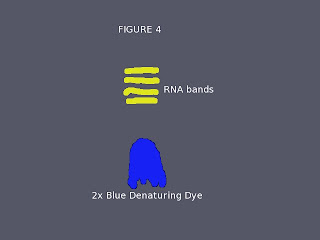Nucleic Acid Pool: N50 RNA Pool
Target: Angiotensin II
Hypertension or more commonly referred to as high blood pressure, is a condition in which the blood pressure in the arteries increases, increasing a person’s risk of heart disease. This includes life threatening ailments such as stroke or heart failure (1). According to the Center for Disease Control, cardiovascular disease is the leading cause of death in the United States, affecting over two million each year. Deterrence of hypertension by means of would eliminate the risk of patients experiencing subsequent cardiovascular events and preventing long term damage to vital organs or death.
One of the causes of hypertension is an abnormality in the renin-angiotensin- aldosterone system (RAAS), a hormone system that regulates cardiac function by controlling blood pressure (2). Angiotensin II is a peptide hormone that is a part of this system that stimulates the release of aldosterone, a steroid hormone that causes blood pressure to increase by narrowing blood vessels. A patient suffering from hypertension would have an overly active RAAS and large quantities of aldosterone, and angiotensin II in their bloodstream. Inhibition of angiotensin II could prevent unsafe rises in blood pressure, thus preventing further complications in a patient’s condition.
A treatment for hypertension would be to use an RNA aptamer with a high specificity for angiotensin II. An aptamer is a short strand of oligonucleotides that has a high binding affinity for a specific macromolecular target (3). Aptamers can be used for a variety of functions, one of which includes inhibiting the function of its target. Thus, an aptamer could be an effective treatment by inhibiting the function of angiotensin II.
Specific Aim 2: Modify aptamer for inhibition of angiotensin II. After selecting for an aptamer with a high binding affinity for angiotensin II, it can be modified for use as an inhibitor, as angiotensin II is very abundant in patients with high blood pressure. This would prevent the release of aldosterone, the hormone subsequently leading to a drop in blood pressure (4).
Catalog Number: 60276-1
Cost for 1mg: $66
Cost per round: $0.01
References
Click here to view full target proposal.
(http://dl.dropbox.com/u/106599935/Owais%20Jamil%20Target%20Proposal.pdf)
Click here to view the first progress report.
(http://dl.dropbox.com/u/106599935/Owais%20Jamil%20Progress%20Report%201.pdf)
Click here to view the second progress report.
(http://dl.dropbox.com/u/106599935/Owais%20Jamil%20Progress%20Report%202.pdf)
Click here to view the final manuscript
(http://dl.dropbox.com/u/106599935/Owais%20Jamil%20Final%20Manuscript%20Fall%202012.pdf)









